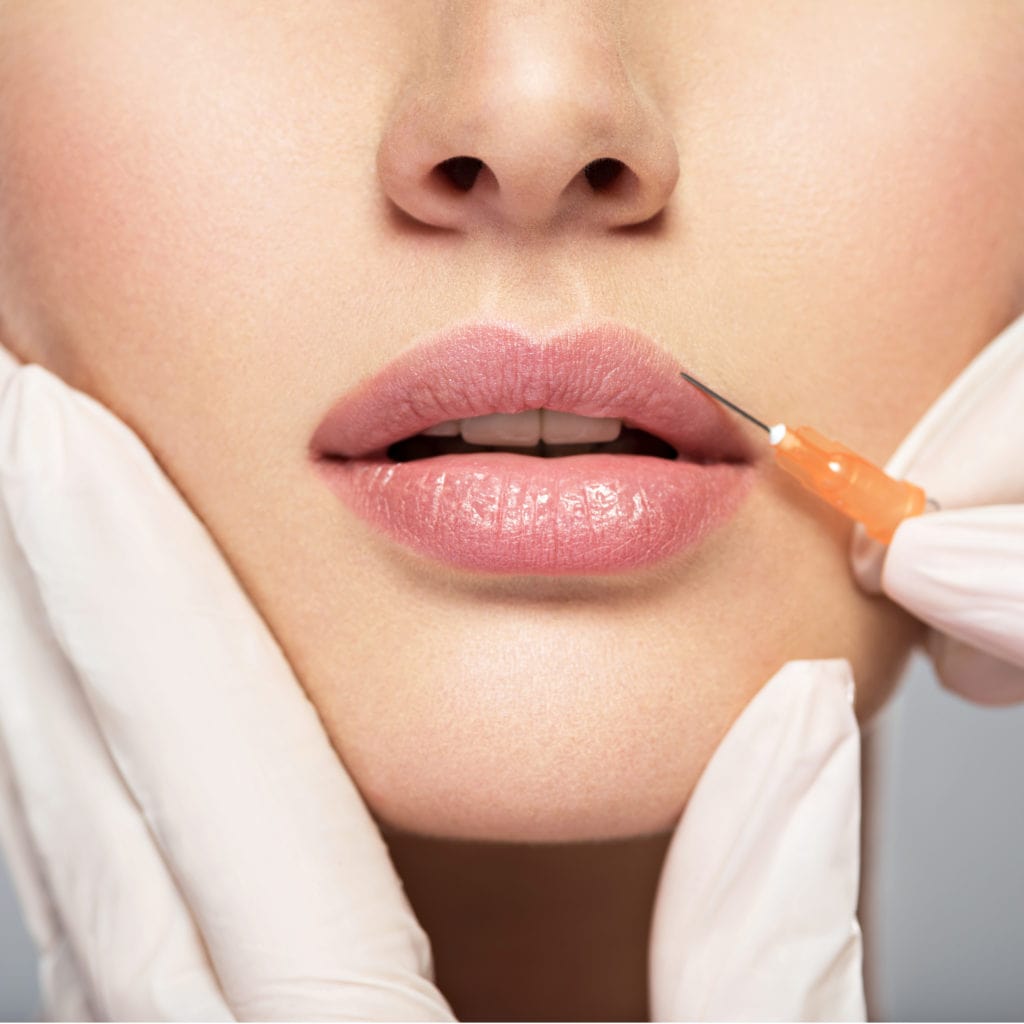Neurotransmitters and neuromodulators are essential chemical messengers that play vital roles in the communication between nerve cells in the brain and the rest of the body. While both are involved in transmitting signals across nerve cells, they have distinct differences in their functions, mechanisms of action, and effects on the body. Understanding the distinction between neurotransmitters and neuromodulators is crucial, particularly in cosmetic treatments targeting the nervous system to enhance appearance. In this blog, we will dig into the differences between neurotransmitters and neuromodulators and how neuromodulators are utilized in cosmetic treatments.
What are Neurotransmitters?
Neurotransmitters are chemical substances that transmit signals or messages between nerve cells, or neurons, in the brain and the rest of the body. They are synthesized in the neuron’s cell body and are stored in tiny sacs called vesicles at the end of the neuron, known as the presynaptic terminal. When an electrical signal, also known as an action potential, reaches the presynaptic terminal, it triggers the release of neurotransmitters into the synaptic cleft, a small gap between the presynaptic neuron and the postsynaptic neuron.
How do Neurotransmitters Work?
Once released into the synaptic cleft, neurotransmitters bind to receptors on the postsynaptic neuron, specialized proteins on the cell membrane. The binding of neurotransmitters to receptors triggers a series of chemical and electrical changes in the postsynaptic neuron, sending the signal from one neuron to another. This process is called synaptic transmission and is essential for the normal functioning of the nervous system.
Examples of Neurotransmitters and Their Functions
There are several neurotransmitters in the human body, each with specific functions. Some examples of neurotransmitters and their functions include:
- Acetylcholine: This neurotransmitter involves muscle movement, memory, and learning.
- Dopamine: Dopamine is associated with reward, motivation, and pleasure and is involved in various physiological and psychological functions, including mood regulation.
- Serotonin: Serotonin plays a crucial role in mood regulation, sleep, appetite, and pain sensation.
- Gamma-aminobutyric acid (GABA): GABA helps regulate neuronal excitability and is involved in calming and relaxation.
What are Neuromodulators?
Neuromodulators, conversely, can influence neurotransmitters’ activity and the nervous system’s overall function. Unlike neurotransmitters, which act quickly and are rapidly cleared from the synaptic cleft, neuromodulators have a slower and longer-lasting effect on neuronal activity. Neuromodulators are diffusely released, affecting multiple neurons or entire brain regions. They can modulate the strength or efficacy of synaptic connections, altering the overall excitability of the nervous system.
How do Neuromodulators Work?
Neuromodulators bind to specific receptors on the neurons, either presynaptically or postsynaptically, and modulate the release or reuptake of neurotransmitters, the sensitivity of receptors, or the overall excitability of the neuron. This modulation can either enhance or inhibit the transmission of signals across synapses, leading to changes in neuronal activity and influencing various physiological processes.
Examples of Neuromodulators and Their Functions
Neuromodulators are a diverse group of molecules with different nervous system functions. Some examples of neuromodulators and their procedures include:
- Norepinephrine: Norepinephrine regulates alertness, attention, and stress response. It plays a role in the “fight or flight” response and can increase the overall excitability of the nervous system.
- Endorphins: Endorphins are neuromodulators known for their pain-relieving effects and play a role in mood regulation and reward pathways.
- Cortisol: Cortisol is a stress hormone that acts as a neuromodulator and can affect various physiological processes, including metabolism, immune response, and memory formation.
- Oxytocin: Oxytocin is the “bonding hormone” involved in social bonding, trust, and attachment. It can also modulate stress responses and has been implicated in various emotional and social behaviors.
Role of Neuromodulators in Cosmetic Treatments
In recent years, neuromodulators have gained significant attention in cosmetic treatments due to their ability to relax muscles and alter nerve activity, leading to aesthetic benefits. Neuromodulators are commonly used in cosmetic treatments to minimize wrinkles and fine lines and to enhance facial features for a more youthful and rejuvenated appearance.
Dysport is one of the cosmetic treatments’ most well-known and widely used neuromodulators. Dysport is a prescription injectable that comes from Botulinum toxin. It is a form of botulinum toxin that can temporarily block the release of acetylcholine, a neurotransmitter responsible for muscle contraction. By inhibiting acetylcholine release, Botox can relax the muscles and reduce the appearance of dynamic wrinkles, such as crow’s feet, forehead lines, and frown lines. Dysport is typically injected into specific facial muscles by a medical professional, and the effects can last for several months before gradually wearing off.
Neuromodulators are also used in other cosmetic treatments, such as dermal fillers, to enhance facial contours, restore volume, and enhance the skin’s overall appearance.
Common Cosmetic Treatments that Utilize Neuromodulators
Several common cosmetic treatments utilize neuromodulators to enhance appearance. Some of these treatments include:
- Dysport: Dysport injections are commonly used to reduce wrinkles and fine lines on the face, primarily on the forehead, around the eyes, and between the eyebrows.
- Dermal fillers: Dermal fillers, such as Juvederm and Restylane, are used to restore volume, improve facial contours, and fill deep wrinkles, such as nasolabial folds and marionette lines.
Safety and Considerations with Neuromodulator Cosmetic Treatments
While neuromodulators are generally considered safe when administered by trained medical professionals, there are some important considerations to keep in mind when considering cosmetic treatments that utilize neuromodulators:
- Qualifications and experience of the provider: It is crucial to ensure that the provider administering the neuromodulator treatment is qualified, experienced, and thoroughly understands facial anatomy. Improper administration of neuromodulators can result in undesirable outcomes, such as asymmetry, drooping, or frozen expressions.
- Potential risks and side effects: As with any medical procedure or treatment, there are risks and side effects associated with neuromodulator treatments. These may include bruising, swelling, redness, pain, discomfort at the injection site, and rare but serious complications such as infection or allergic reactions. Discussing these risks with your provider and making an informed decision is essential.
- Duration of effects and maintenance: The effects of neuromodulator treatments are temporary and typically last for several months before gradually wearing off. Maintenance treatments may be required to sustain the results over time.
- Individual considerations: Only some may be suitable candidates for neuromodulator treatments. Factors such as medical history, pregnancy, breastfeeding, and allergies should be considered, and a thorough consultation with a qualified medical professional should be conducted to determine the appropriateness of the treatment.
Conclusion
In conclusion, neurotransmitters and neuromodulators play distinct roles in the nervous system, with neurotransmitters being responsible for rapid signal transmission across synapses and neuromodulators modulating overall neuronal activity and influencing physiological processes. Neuromodulators have emerged as popular tools in cosmetic treatments, providing aesthetic benefits by relaxing muscles and altering nerve activity.
If you’re considering cosmetic treatments that utilize neuromodulators, prioritizing safety and choosing a qualified provider, such as Savvy Beauty and Wellness, is crucial. Savvy Beauty and Wellness is a reputable and experienced provider of cosmetic treatments, offering a range of services that utilize neuromodulators, including Dysport and Dermal Fillers. With their expertise in facial anatomy and advanced techniques, you can trust Savvy Beauty and Wellness to deliver natural-looking results and help you achieve your desired aesthetic outcomes.
When opting for neuromodulator cosmetic treatments, you must be mindful of potential risks and side effects, discuss them with your provider, and make an informed decision. Remember that these treatments’ effects are temporary, and maintenance treatments may be required to sustain the results. Individual considerations, such as medical history, allergies, and pregnancy or breastfeeding status, should also be considered. A thorough consultation with a qualified medical professional at Savvy Beauty and Wellness can help determine the appropriateness of the treatment for you.
If you’re interested in enhancing your facial features, reducing the appearance of wrinkles, and improving your overall appearance, consider consulting with Savvy Beauty and Wellness, a trusted provider of cosmetic treatments utilizing neuromodulators, for safe and effective results. Prioritize your health and well-being by choosing a reputable provider for your cosmetic treatment needs.






